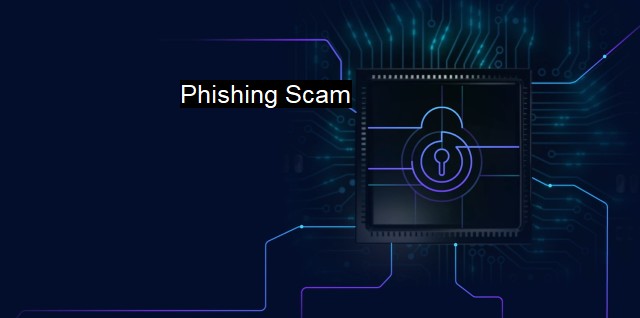What is Phishing Scam?
The Threat of Phishing Scams: How to Identify and Protect Yourself in the World of Cybersecurity
"Phishing Scam" is a term rooted deeply in the context of cybersecurity and protection strategies, like antivirus software. The term refers to a malicious act performed by hackers with an intent to collect sensitive data, such as usernames, passwords, credit card details, or other pieces of confidential information by disguising themselves as a trusted and genuine entity in the digital realm. This fraudulent act is primarily carried out through email spoofing or instant messaging, alongside directing users to fake websites where their personal information is stolen and misused.To understand the process of Phishing Scam further, it begins when a user receives an email, instant message, or is directed towards a website that looks similar to a real one; could be a renowned bank, popular social networking site or an online payment processor/company. The message usually triggers a sense of urgency or sparks fear, pressing them to act immediately.
Hardly could one tell the scam apart because of the sophisticated artifice of optimized social engineering tricks utilized to fool the user. Often the message encourages one to check their account urgently due to a problem with their account while the fake site, mirroring a genuine interface, cues one to input their credentials such as user name and password or financial information.
The moment the user does it, the cyber-criminal cashes on the opportunity, by extracting the data and using it illicitly. Perpetrators, also known as phishers, orchestrate countless scams a day attempting to exploit the vulnerability of common users in poor digital hygiene practices and gathering considerable amounts of sensitive data.
Speaking in terms of cybersecurity, tackling such deceptive situations requires an amalgamation of employee awareness training and deploying proper hardware and software defenses. The former emphasizes understanding the nature of phishing scams, recognizing suspicious emails or websites while the latter aspect involves employing technologies like firewalls, spam filters, antivirus software, and content blocking.
One crucial aspect while counteracting phishing scams is only the possession of antivirus software is not enough to protect one from phishing attacks. While these softwares aid in detecting dubious viruses embedded in the emails or websites, they are not mighty effective in notifying about phishing scams. Such intervention particularly necessitates an antivirus with an inbuilt phishing protection feature.
Among such protections, multi-factor authentication is a notable method that significantly reduces phishing scams' efficiency as it reaffirms the user's identity. If the provider offers multi-factor authentication, they will add another layer of protection by sending a unique code to a secondary device that the user must input to gain access.
Concludingly, it is essential to always update your software, hardware, and practices to stay one step ahead of these cyber attackers. Remember to be careful about what information you're putting out and who you're giving it to because in the era of digital overload, cyber threats like phishing scams are becoming increasingly common. Hence, it not only requires us to have robust antivirus software with an anti-phishing component but also compels us to foster a detailed understanding of the implications of such scams and ways to trace and tackle them effectively.
So let the secure online practices be the backbone of our endeavors in this cyberspace.

Phishing Scam FAQs
What is a phishing scam?
A phishing scam is a type of cyber-attack in which an attacker sends a fraudulent email, message, or website designed to trick victims into disclosing sensitive information such as login credentials, credit card numbers, or personal data.How can I identify a phishing scam?
Some common signs of a phishing scam include misspellings, suspicious links, urgent requests for personal information, and offers that seem too good to be true. Always be cautious when receiving unsolicited messages or emails, and verify the sender's identity before providing any sensitive information.What can I do to protect myself from phishing scams?
To protect yourself from phishing scams, you should always keep your antivirus and anti-malware software up to date, use strong passwords and two-factor authentication, avoid clicking on suspicious links or downloading attachments from unfamiliar sources, and be cautious of unsolicited messages or emails.What should I do if I think I have fallen victim to a phishing scam?
If you believe you have fallen victim to a phishing scam, the first thing you should do is change your passwords immediately and monitor your accounts for any unusual activity. You should also report the incident to the relevant authorities and notify your bank if there has been any financial loss. Finally, consider seeking professional help from a cybersecurity expert to help prevent similar incidents from happening in the future.| | A | | | B | | | C | | | D | | | E | | | F | | | G | | | H | | | I | | | J | | | K | | | L | | | M | |
| | N | | | O | | | P | | | Q | | | R | | | S | | | T | | | U | | | V | | | W | | | X | | | Y | | | Z | |
| | 1 | | | 2 | | | 3 | | | 4 | | | 7 | | | 8 | | |||||||